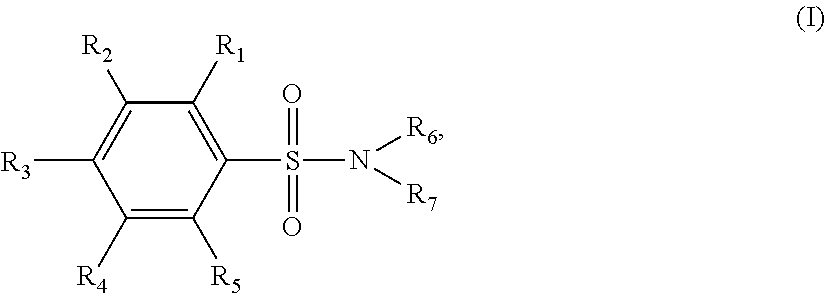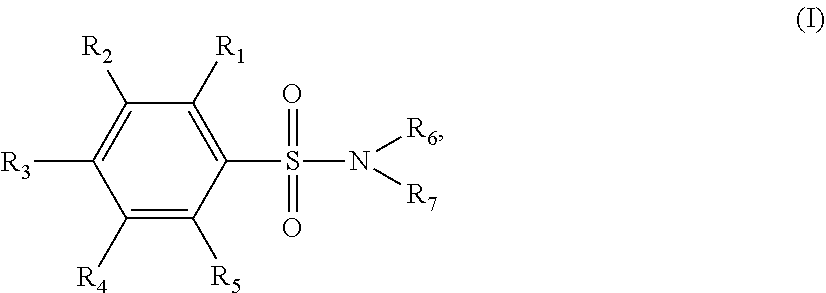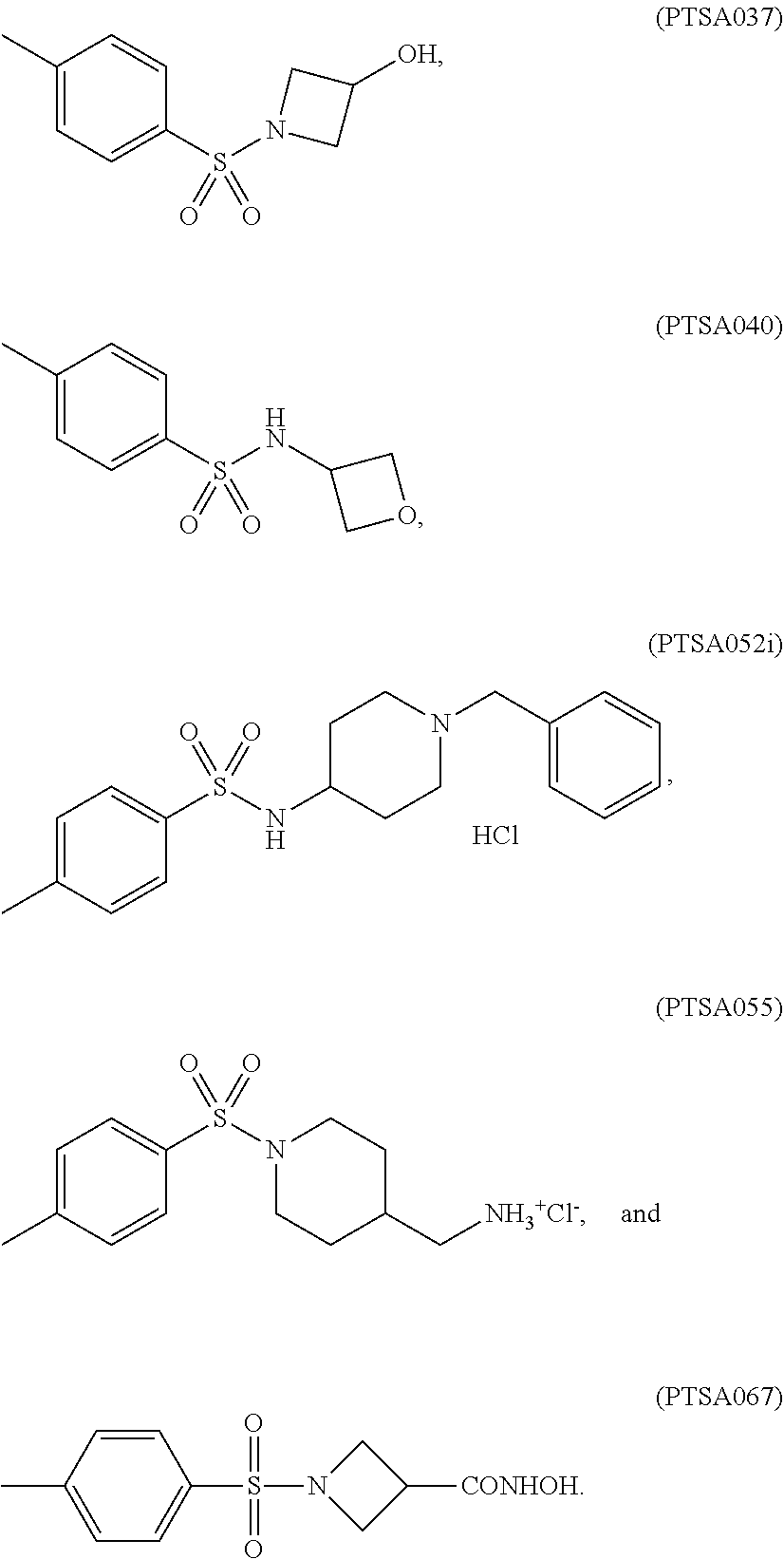Benzenesulfonamide derivatives and method for treating cancer
a technology of benzenesulfonamide and derivatives, applied in the direction of amide active ingredients, heterocyclic compound active ingredients, drug compositions, etc., can solve the problem of unmet needs for providing
- Summary
- Abstract
- Description
- Claims
- Application Information
AI Technical Summary
Benefits of technology
Problems solved by technology
Method used
Image
Examples
example 1
on of p-TSA Derivatives
[0034]Sixty one p-TSA derivatives as shown in Table 1 were chemically synthesized by ligating a functional group to the amino group of p-TSA, while at least one of the —NH groups was remained in the p-TSA derivatives, allowing the solubility of the p-TSA derivatives to be increased. Such derivatives can be divided into 8 major groups based on the characteristics of their functional groups. The first group of the p-TSA derivatives belongs to p-TSA metabolites and the salt thereof. The second group of the p-TSA derivatives belongs to acidic derivatives as being p-TSA prodrugs, wherein a strong electron-withdrawing group was ligated to the amino group of p-TSA, allowing the —NH group of p-TSA to be acidic to form a salt. The third group of the p-TSA derivatives belongs to the amino alcohol group, wherein the p-TSA derivatives with the hydroxyl group were formed by reacting p-toluenesulfonyl chloride with an amino alcohol, and the hydroxyl group of the p-TSA deriv...
example 2
y of the p-TSA Derivatives
[0035]Table 2 shows the amounts of each of the p-TSA derivatives for preparing a 3 M solution in DMSO or water. Each of the powder of p-TSA derivatives was duplicated, placed in each 15 mL centrifuge tube, followed by adding 200 μL DMSO or 200 μL water and shaking for 10 to 20 seconds for dissolution observation. If the powder was not dissolved, additional DMSO or water was added, and then the mixture was shaken. The tube was left to stand for 10 minutes for observation if the powder was still not dissolved after adding 1 mL DMSO or 1 mL water. If the powder was still not dissolved after adding 5 mL DMSO or 5 mL water, additional 1 mL DMSO or 1 mL water was added, and then the mixture was shaken for 30 seconds. If the powder was still not dissolved after adding 10 mL DMSO or 10 mL water, the tube was left to stand for 12 to 16 hours and observed on the next day. DMSO or water was added into the tube having the undissolved p-TSA derivatives up to 15 mL, foll...
example 3
the p-TSA Derivatives on Killing Liver and Lung Cancer Cells
[0041]Human non-small-cell lung cancer cell lines H460 in an amount of 5×103 cells / well or human liver cancer cell lines Hep3B in an amount of 4×103 cells / well was respectively seeded in each well of a 96-well plate and incubated under the condition of 5% CO2 at 37° C. for 24 hours. Further, 25 μL trichloroacetic acid (TCA) was added into each well for fixing cells. After letting to stand for 10 minutes at room temperature, the supernatant of each well was removed, and each well was washed with 200 μL H2O once.
[0042]Each of the sixty p-TSA derivatives was added into each well in an indicated concentration, and incubated for 48 hours. If the p-TSA derivative was seriously precipitated in a tube during dilution, the tube would be left to stand for 5 to 10 minutes, and the supernatant of the tube would be used in this test. The control in this test was performed in the same procedure as described above, except for addition of ...
PUM
 Login to View More
Login to View More Abstract
Description
Claims
Application Information
 Login to View More
Login to View More - R&D
- Intellectual Property
- Life Sciences
- Materials
- Tech Scout
- Unparalleled Data Quality
- Higher Quality Content
- 60% Fewer Hallucinations
Browse by: Latest US Patents, China's latest patents, Technical Efficacy Thesaurus, Application Domain, Technology Topic, Popular Technical Reports.
© 2025 PatSnap. All rights reserved.Legal|Privacy policy|Modern Slavery Act Transparency Statement|Sitemap|About US| Contact US: help@patsnap.com



